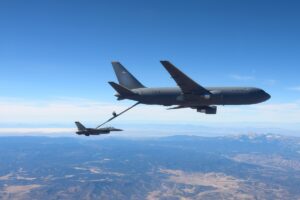
The U.S. Air Force Air Mobility Command (AMC) is surveying the industry landscape to determine whether there are sources to supply thermal curtains to protect the crew of the Boeing [BA] KC-46A tanker from nuclear radiation. "The cockpit thermal curtain protective system shall provide quick and positive protection to the aircrew members and their stations from the thermal radiation and luminous effects of nuclear weapon detonations," per an AMC requirements document posted on March 18. AMC said that it wants…














